La revue d'architecture et de design
Interview : Karim Rashid pop designer
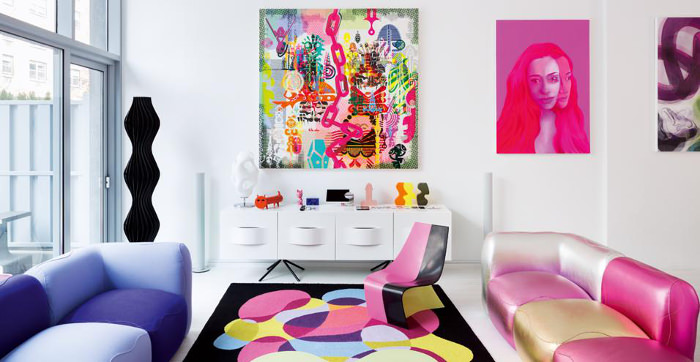

Le loft du designer – Interview : Karim Rashid pop designer
Partons ce vendredi à la rencontre de Karim Rashid, véritable designers touche-à-tout, ayant accepté de répondre à mes questions et de nous faire découvrir son univers coloré, décalé et assumé !
On le présente sur son site : « Karim Rashid is one of the most prolific designers of his generation. Over 3000 designs in production, over 300 awards and working in over 40 countries attest to Karim’s legend of design.« , cela impose mais jouit il d’une notoriété équivalente dans notre petit hexagone ?
Phrase sélectionnée : « I always disliked the idea that bright colors are only for children and when we get older we conform to dark hues » !
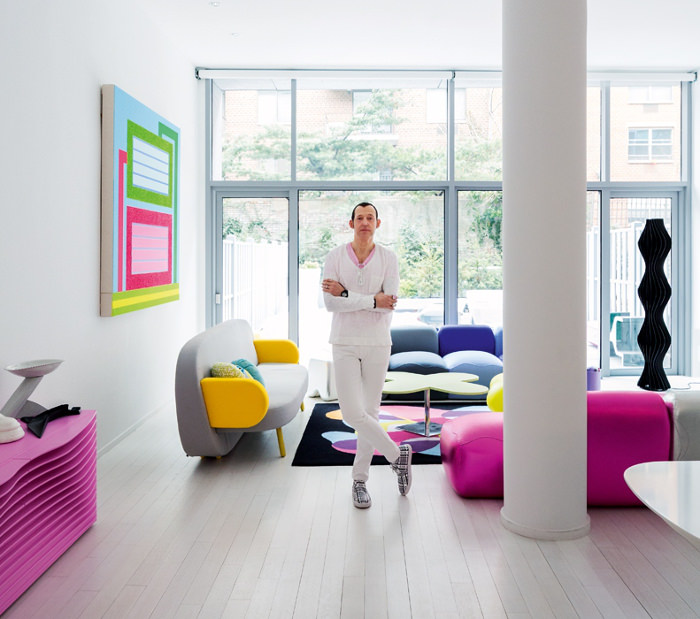
Interview : Karim Rashid pop designer
– Architect, DJ, stylist, do you consider yourself as a designer ?
Yes I am a designer ! Never a stylist. Design is about living in the present — style is about living in the past. Design shapes our future, stylists haunts us with history. I am not interest in the past and not interested in people’s interest in the past.Design is about progress, about moving us forward, about challenging and elevating the human spirit. We should be conscious and sensorially attune with this world in this moment.
– In your opinion, why the name of Karim Rashid is not really famous in France ?
Firstly Starck is French, secondly the French support their native talent always very well. French support french. Starck became known for designing Miterrand’s office back in 1986 and this made him well known in France.
In United states there is no support for design like in france, and if there is, it is euro-centric, not supportive of American talent. So it is much harder for an American designer to become well known in United Staes, let alone the world. So I have become well known in the world and still 90% of my work is outside the USA. But I will say that some of my greatest work has come from collaborations with French companies. I’ve worked with LaCie, Christofle, Davidoff, Kenzo, Veuve Clicquot, BPI (all Issey Miyake cosmetics), XO to name a few.
– What do you think of French design ?
France had a phenomenal history of Design since back in early modernism with Eileen grey, Le Corbusier to Charlotte Perriand and Jean Prouve and serge mouille. Then with my favorite period of french design, the plastic space age of the 60’s with Andre Couregges, Pierre Cardin, Olivier Mourgue, and pierre paulin. And then in the 90’s with Starck, Pillet, Borillics and others. But now there is no National style. I feel today we live in such a global environment, that the distinct separation in style, taste, and local culture is diminishing.
As the world gets smaller and smaller, and we have access to international markets through the internet and new technologies, the cultural lines begin to blur and fade. In fact the world is becoming somewhat homogenous due to mass production but I think that with new technologies, we will once again start to see very desperate and diversified products especially when manufacturing- on-demand is in place. The only difference eventually in humans will be the individual not race, creed, color, or religion or borders.
That said I greatly respect the work of French Designers. Philippe Starck is one of my idols. The Bouroullec brothers make very thoughtful work. But they do not design with a National style. Design is global, not local.
– What creation makes you most proud of ?
Well that is a difficult task! As with most creative people it is difficult to have a favorite since my mind and passion is always into my latest projects. I am now designing several buildings in the world from Latvia to Miami to Toronto to new york so I am quite excited about shaping architecture and people’s domestic lives. But if I must choose then I am proud of the Garbo can for Umbra that I designed in 1994 since it is 20 years old and still so successful and faucets I designed for Cisal in 2007 (I think they were quite original). My other favorite design is the Kaj watch for Alessi. I have all 12 colors so I change them everyday. They are so light, so comfortable, so simple, and inexpensive, which is really my mantra. I must say that I enjoy from micro to macro, anything and everything that creates a better human experience.
Afin d’imager les propos du designers, voici deux nouvelles créations, le Bureau Hook pour Newform et plus bas, la collection de suspensions Nafir pour Axo Light.
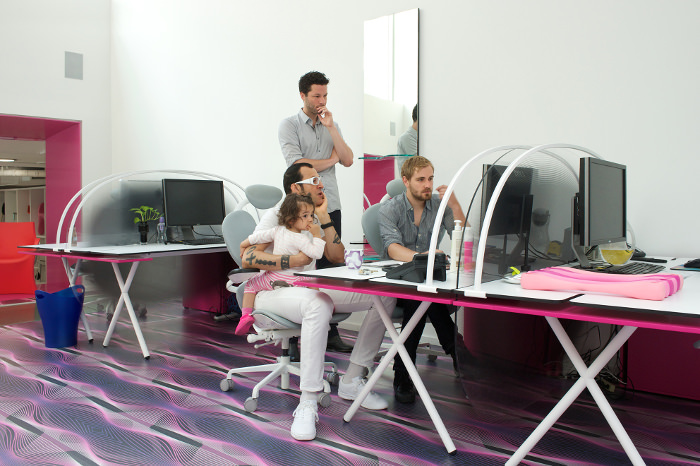
Bureau Hook pour Newform – karim Rashid
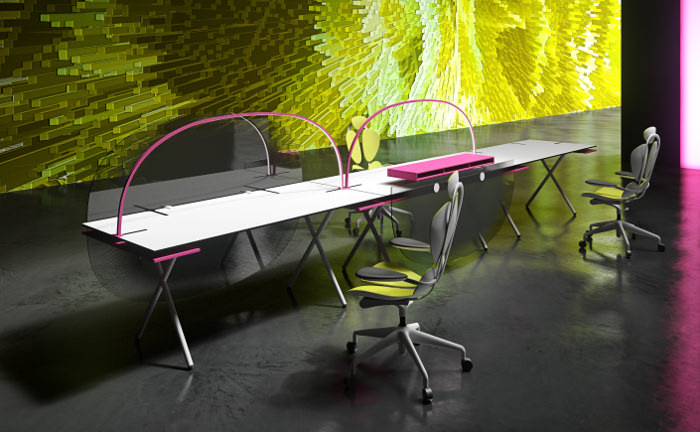
Bureau Hook pour Newform – karim Rashid
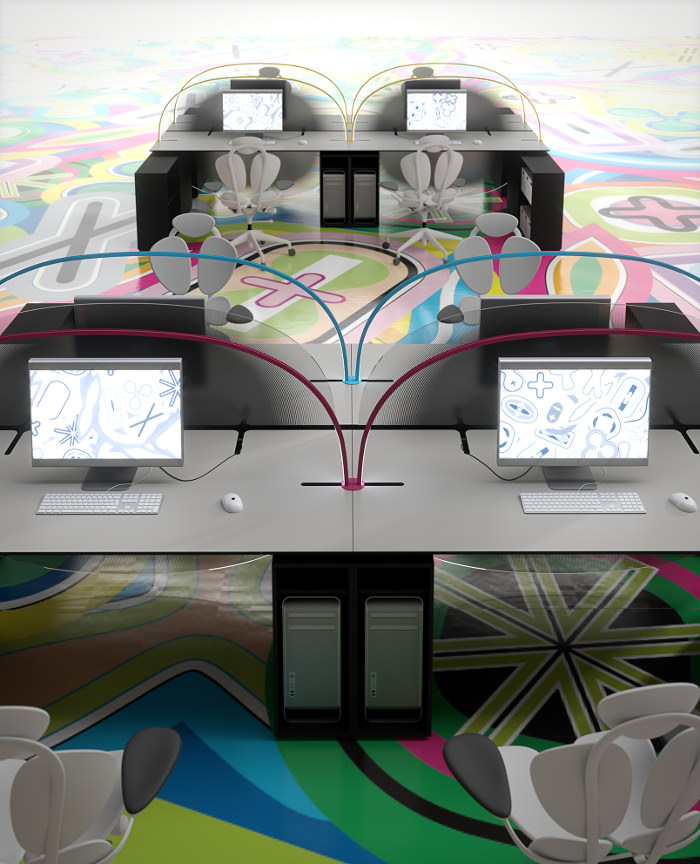
Bureau Hook pour Newform – karim Rashid
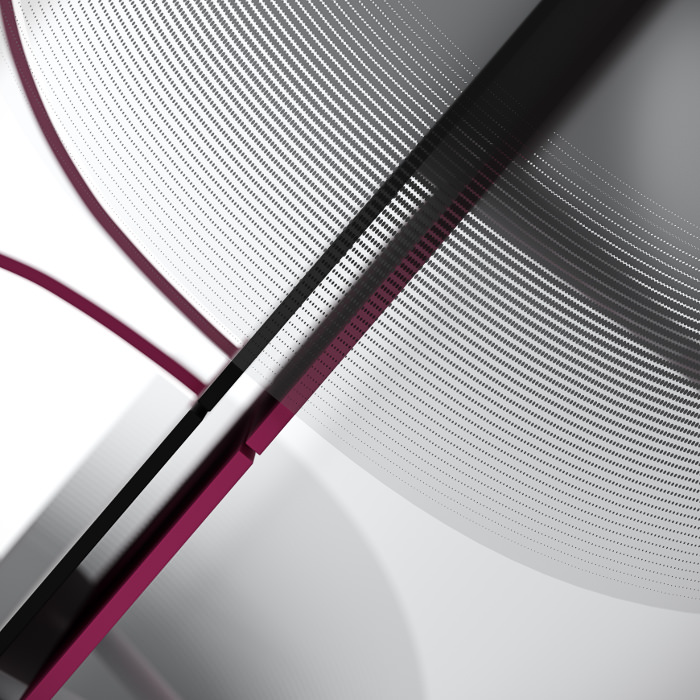
Bureau Hook pour Newform – karim Rashid
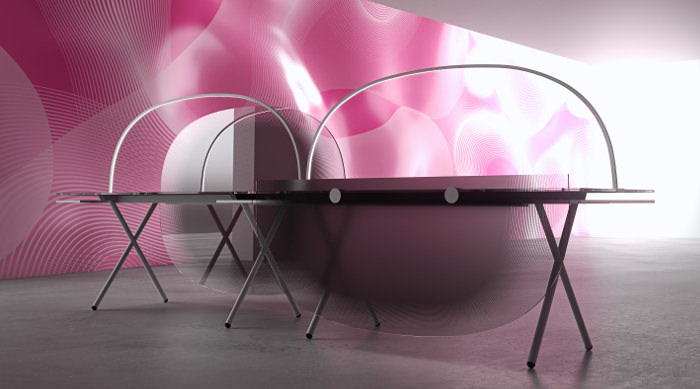
Bureau Hook pour Newform – karim Rashid
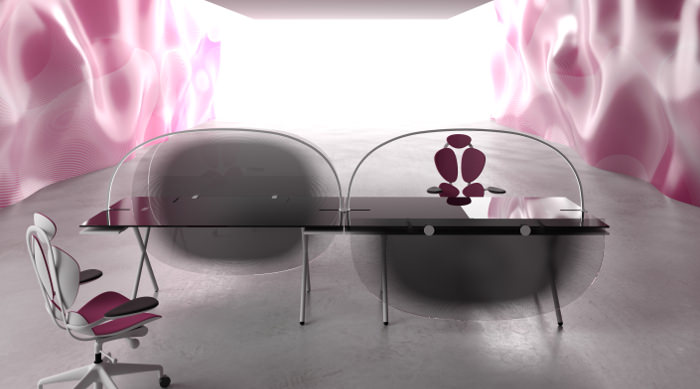
Bureau Hook pour Newform – karim Rashid
– Where do you get this colorful inspiration ?
Color is very real, very strong, and has a real physical presence. It is not abstract and intangible. I think it is one of the most beautiful phenomena of our existence. Color is life and for me, color is a way of dealing with and touching our emotions, our psyche, and our spiritual being.
I always disliked the idea that bright colors are only for children and when we get older we conform to dark hues, to banal grey and browns. Color should spread across all the years, children should be brought up with sophisticated colors and hues too, not brash primaries.
Will you ever get out of this influence Pop, or it will remain your signature ? My work is digipop which is 21st. Century and my signiture is POPulist and POPular and for the global POPulation.
Hotels, offices .. Why this orientation towards the professional world ? a choice ? I love the larger experiential impact an interior can have on people lives. With hospitality design or public space, I know that masses of people have access to my designs, and they aren’t just looking at it, they are physically immersing themselves inside my concepts. But I wouldn’t say hotels and offices are my orientation or choice – just what work comes along at the moment. People see me in one vernacular then think it’s all I can do. I designed one condo in NYC and now I’m designing 8 different residential buildings globally.
– What does your workspace ? studio ? Home …?
I had an office in Chelsea NYC for about 20 years and finally moved to a very different area – classic New York in Hell’s Kitchen midtown on 53rd street, the same street as MOMA, and close to Columbus circle, MAD Museum, the theatre district, central park and Times Square. I have been here now about 1 year and I never thought I would love being in the center of Manhattan but I must say with all the skyscrapers, Seagram’s building, Mies towers, and my favorite skyscraper the Hearst Tower, I love it here. The only part of Chelsea I will miss is all the neighboring art galleries. The new office has 8 meter ceilings and incredible daylight from all directions. The space was designed to have a volumes sense of serenity for optimum creativity. I chose the space because it is about 500 sq, meters with 8 meter high ceilings and fantastic light from any directions. Huge windows flood the office and reception space with light. We even have glass floors to bring light down to the basement and skylights.
– Do you work in a team ?
Absolutely, I have a staff of 20 in my NYC office and just opned a new offcie in china this year with 20 people. The ‘Krew’ is very international with designers from Netherlands, Colombia, Slovakia, Chile, Indonesia, Malaysia, Korea, Switzerland, Italy, Iran, Egypt, Brazil, China, and the USA. We are a big family, with many of the staff working here for 8-10 years.
– How do you choose your projects ?
I don’t; My clients choose me. The one thing I have learned in the last 20 years is that as designers we see potential in everything, in every project, in every possibly, but it is not true. We are optimists to our demise. The most important thing is a good relationship. Now I know the minute I meet someone whether we will do great work together or not, and design is completely collaborative with your client. It should not be a war, or you struggling to get your ideas across. You either see eye to eye or forget it – you will be wasting your time.
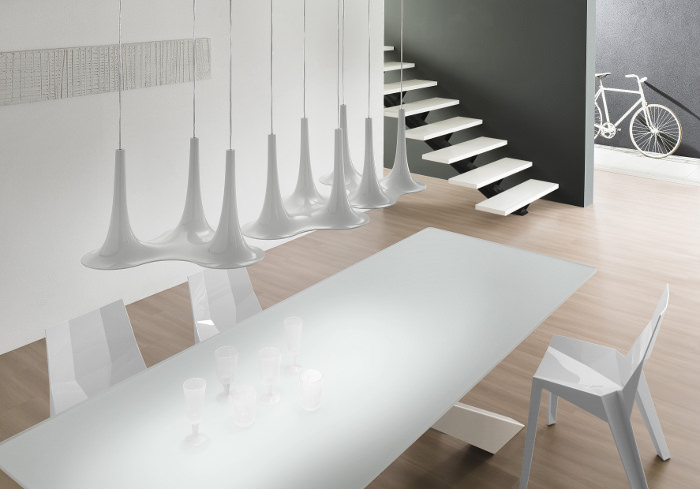
Suspensions Nafir pour Axo Light – karim Rashid
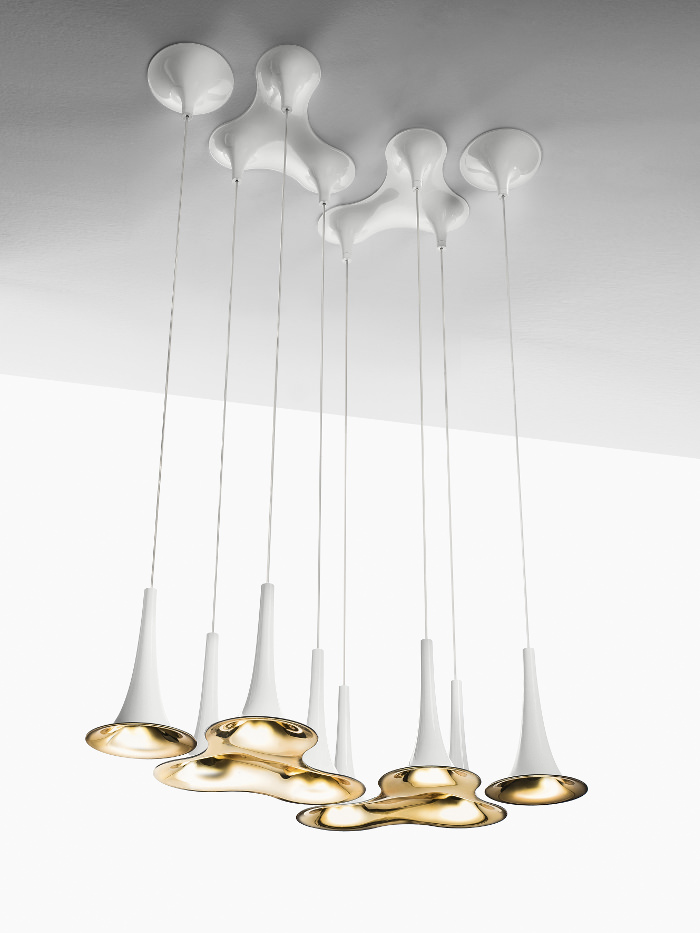
Suspensions Nafir pour Axo Light – karim Rashid
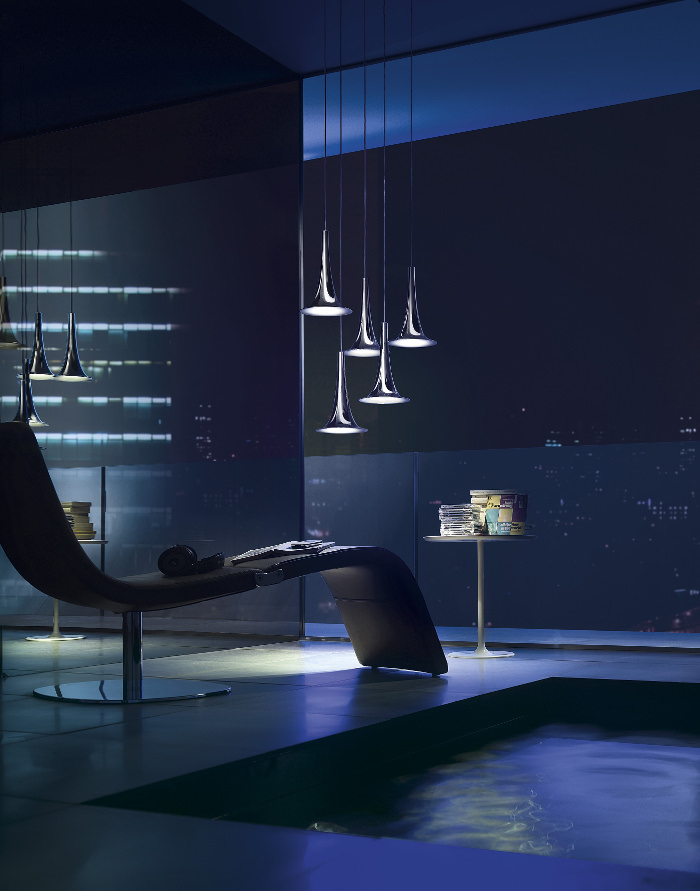
Suspensions Nafir pour Axo Light – karim Rashid
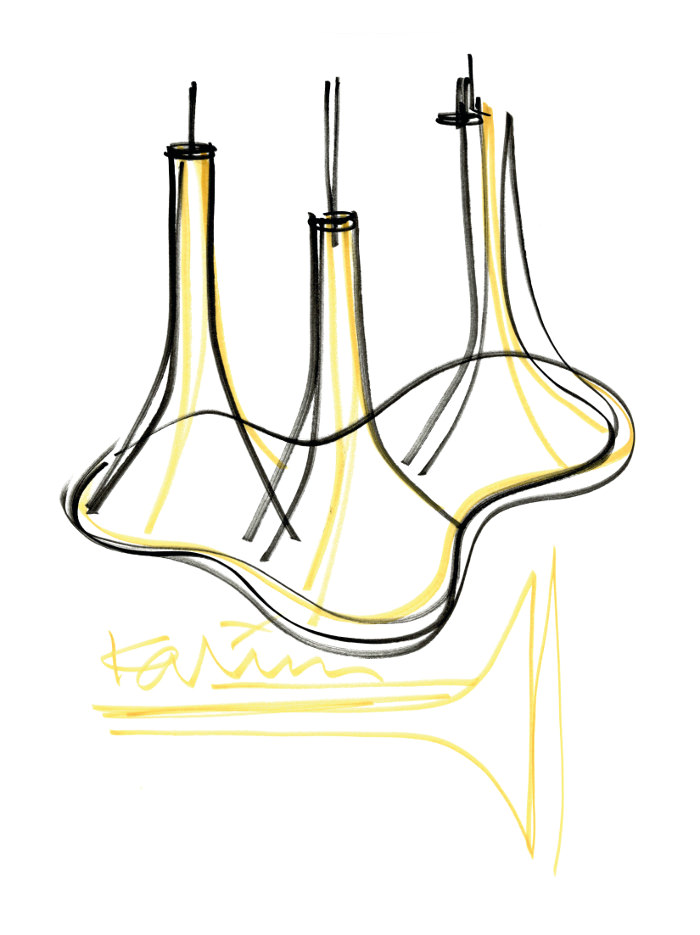
Suspensions Nafir pour Axo Light – karim Rashid
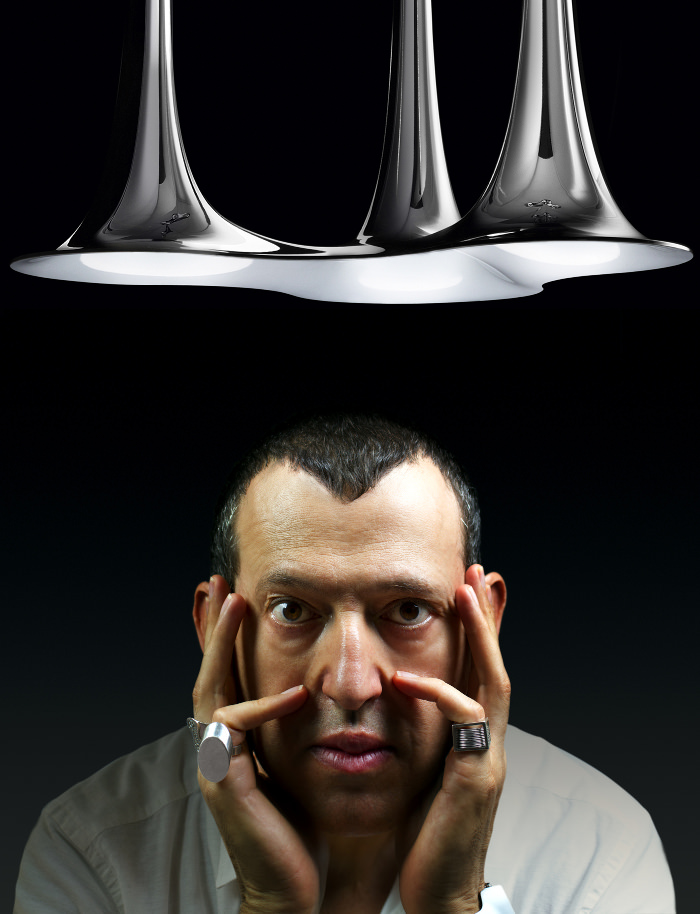
Suspensions Nafir pour Axo Light – karim Rashid
– Where do you see yourself in 10 years ?
Still Designing, Living in a beautiful custom home on a few acres. It will be my Palais Bulles. I predict that in the future we will have no wallet, no credit cards, no keys, no health card, no money, no identification, no passport – it will all be with our finger print or a smart tattoo, hence we will have clothes with no pockets. So we have our hands free and do not have to carry anything, and we are free to go and travel anywhere. We will have one piece jumpsuits that are form fitting and made of liquid crystal polymer so that we can put any video, image, graphics, all over our bodies. The outfit will heat and cool down when we need it. The collar will have a scrolling text that broadcasts my thoughts (the thoughts I want to be communicated). That is my future that I want now. I want to future to have no borders, no boundaries, no jingoism, no racism, no prejudices, no fanatics, no violence, no cancer, no heart decease, no toxic chemicals, no pollution, no GMO’s, no pesticides, no water crisis, no poverty, no nuclear arms, no dictators. Just one big beautiful world.
What are the things we can wish you for the future ? Good Health, Great Clients, Years of Design ahead of me. I believe my best wor ksi yet to come and I am determeidn to create responsible sutainable smart projects that push boundaires and become more radical and not create conservative banal things that many designers do to sell their soul.
Merci à Karim de nous avoir dédié quelques minutes de son temps, merci également à l’agence Pour l’amour du beau (site en approche), pour cette belle mise en relation.
Pour en savoir plus sur le designer : Karim Rashid (retrouver ses articles)
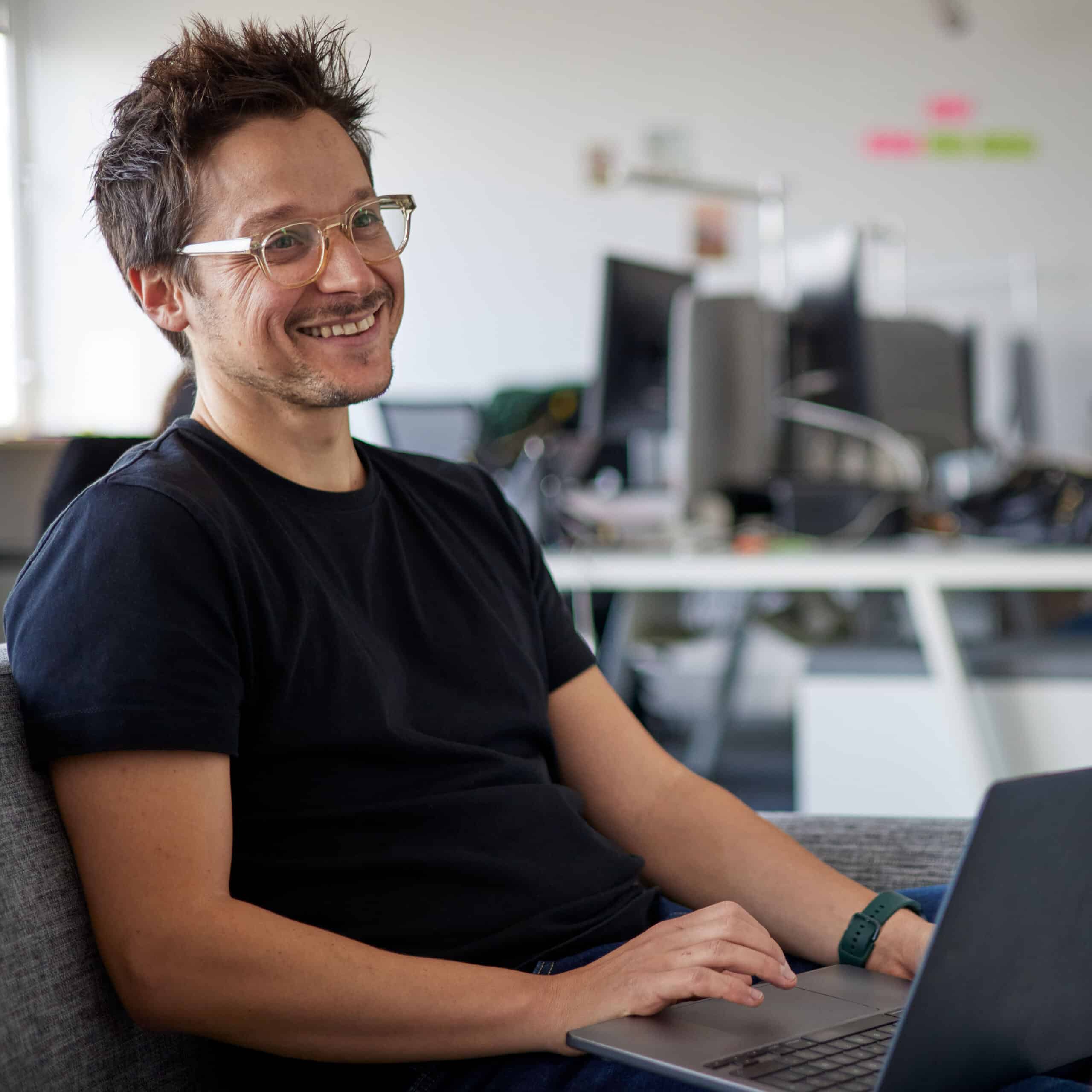
Laisser un commentaire
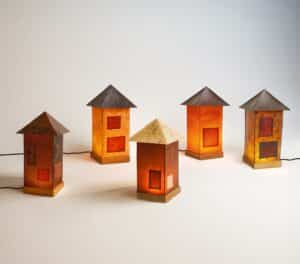
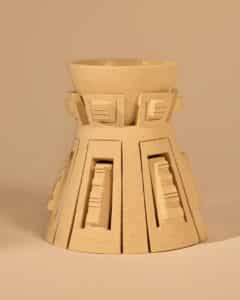
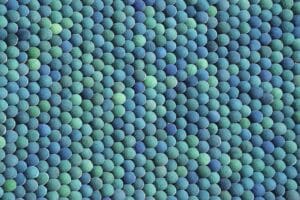


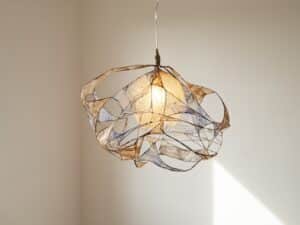
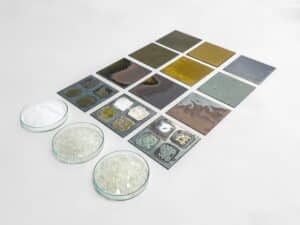
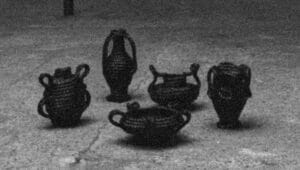
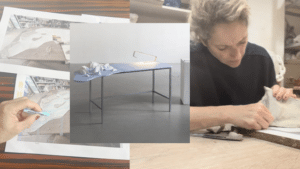
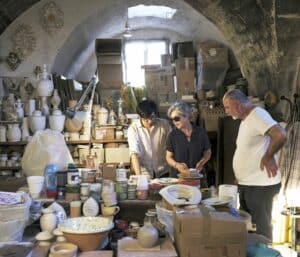

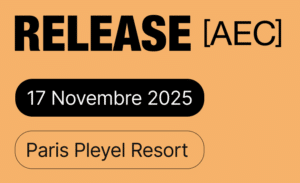
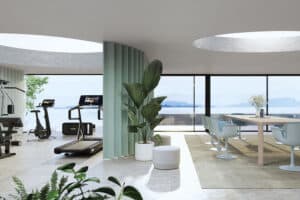
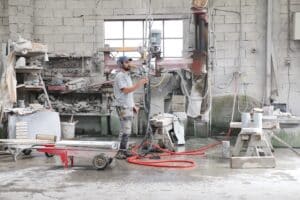
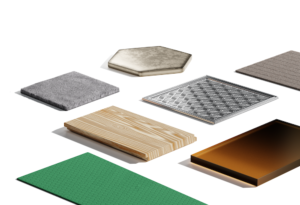
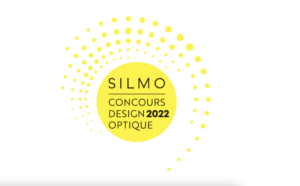

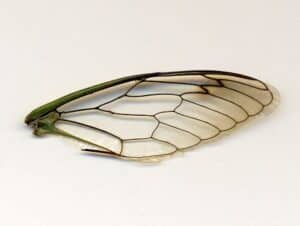
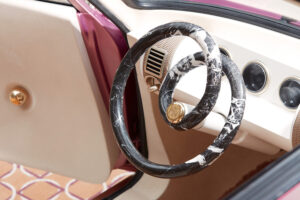

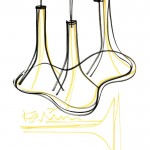
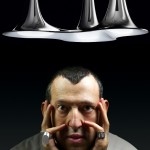
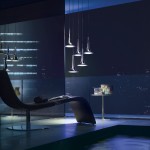
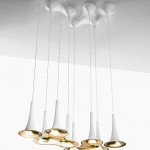
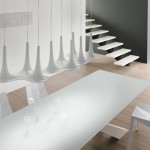
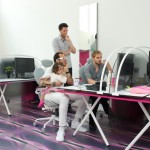
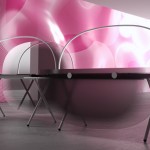
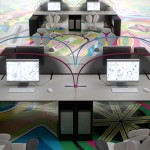
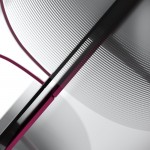
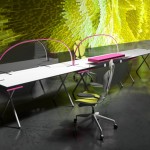
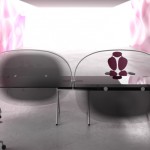
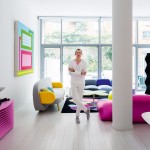
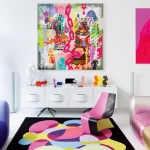
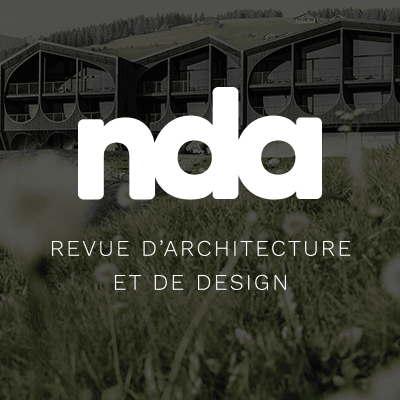
STAR SYSTEM ? STARCK SYSTEM ? Philippe Starck et Karim Rashid ont explosé mediatiquement par le developpement de la technique de l’injection plastique. En effet le côut des moules qui souvent approche le demi million d’euros doivent être amortis par le volume. Ce sont donc des designers démocratiques. Comme Starck , c’est un bon sketcheur qui dessine beaucoup . Son studio de New York raffirne ces dessins en 3D en tenant compte du territoire de designer qu’il a construit qui se rapproche du territoire d’une marque. avec positionnement et codes de marque. Il est très influencé par Luigi Collani et le Bio-Design est un courant conceptuel du design industriel lancé par Luigi Colani dans les années 60. . C’estvavec cette logique qu’il prefere le space age, les années 6à dans le design Français. Il utilise beaucoup dans son vocabulaire formel la ligne courbe . IL admire Joe Columbo et Rodolfo Bonetto, pour lequel il a travaillé à Milan . L’influence de Sottsass qui fut son prof et du mouvement Memphis dont Matteo Thun existe aussi ici et là dans son immense book…. Son poit faible à ses debut est le pointt fort de Starck les chaises , la reine des typologies mobilières. http://www.numeral.com/geringArchive/2004/karim_rashid_images/Rashid_Fatboy.jpg
@ Johann Paquelier « Beurk. Pardon » commentaire Facebook Quid des bricks de la construction de projet en luminaire et en bureau ( projets en photo) ainsi que la construction de notoriété face à l’empire starckien et wanderien?
CE PROJET DE BUREAU POURRAIT ETRE SIGNE PAR MATALI CRASSET A UN DETAIL PRES…. Le voici dans une presentation avec caissin et une couleur differentePrincipes de modularité, l’appropriation, la flexibilité et le réseau., vocabulaire formel geometrique basique, couleur d’attribution vive en aplat plus solaire (jaune et orange),…. probablement un projet de son studio de NEW YORK … Karim ne parle pas de son Studio de EINDHOVEN.http://www.salonarde.ru/sites/default/files/ARDE_NEWFORM_Hook_5.jpg
LE CONCEPT DE BUREAU VU DU DESSUS DU PLATEAU…. est bien meilleur que de 3/4 ou lateralement c’est pas le pied… http://www.officebit.com/images/fiere/salone_ufficio/2013/promenade/newform_hook.jpg
LE BUREAU HOOK POUR NEWFORM en gommant l’omnipresence rose flashy un peu trop girly pourrait se retrouver en sujet de bed : jeune designer à la recherche d’un editeur http://www.theplan.it/J/images/stories/Newform-hook.jpg
PLASTICIEN DANS TOUS LES SENS DU TERME, IL A COMMENCE SA CARRIERE DE DESIGNER INDEPENDANT PAR UNE BELLE CORBEILLE POUBELLE AU NOM DE STAR GARBO qu’il cite encore dans cet interview comme son produit preferé. Il était encore très moyen en chaise empilable STACKABLE CHAIR, la grande spécialité de STARck Voila un dessin de recherche qui montre comment fonctionne: son processus creatif selon des chercheurs en neurosciences, l’analogie est le moteur de la pensée…donc forcement de L’ESPRIT DESIGN.
@ Jo Yana… Je n’ai aucune expertise en design mais une pratique en dessein c’est à dire de la conception par l’esprit d’un but à atteindre . J’ai aussi une pratique du dessin que j’ai appris en copiant Philippe STARck et les grands artistes contemporains du XX ème siecle. notre empereur du design de signature mondialisé est celui qui a servi à mettre au point le business model de Karim…. Je ne possede aucun objet de Karim et la chaise que j’ai de Starck ( en fait + plus de Quittlet) je l’ai gagné dans BED…
Ahah Prof Z, bon je te l’apprend mais l’agence qui a mis en relation c’est moi qui en suis le créateur 😉 Je suis l’agent de KR pour la France.Je suis ravi que ton expertise en design soit élogieuse en sa faveur ! ;)A très vite ici ou ailleurs …
EN UN COUP DE CRAYON LE DESIGNER FAIT UN DESSEIN STRATEGIQUE PRODUIT MARCHE POUR UNE ENTREPRISE TOUT EN RESTANT DANS SON VOCABULAIRE ET SA GRAMMAIRE ARTISTIQUE QU’IL ADAPTE AUX TENDANCES… et il passe entre un champ de mines ( de crayons) de Jaime Hayon , de Tom Dixon , de Ross Lovegrove , et de Patrick Jouin…. tout en étant formellement polysémique ce qui permet un debat sur les interpretations personnelles et donc fait monter le post rank google.
BLUFFE PAR SA MEMORAH LUMINAIRE ELECTRIQUE… Pour vous dire la verité si je mens, j’avais pris sa memorah, le chandelier , le candélabre à sept branches des Hébreux, pour un porte crayons…. Le voila devenu suspension avec une fluidité dorée dans l’air du temps et un nouveau concep suspension.
JE SUIS BLUFFE…. Je ne sais les conditions de cet(te) interview mais j’imagine que c’est à l’américaine…. Jusqu’ à maintenant c’ était le territoire de Joe Yana qui voue un culte à cette star du design…. Les français sont reductionnistes dans tous les sens du terme et Karim Rashid c’est souvent pour eux la panthère rose du design. Karim sait dessiner depuis son plus jeune age alors que beaucoup de designer français ne le savent pas apres une ecole de design. Je fais l’eloge de la main, de sa main depuis des lustres. Pour nos amis designers industriels pour qui il est un mouton noir du design utile, sachez que Karim a commencé par dessiner industriellement des machines de mammographie et de l’electroportatif pour une marque bien connu ici Black et Decker…. On en revient à ces debats bien français entre les indus et les autres….